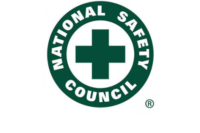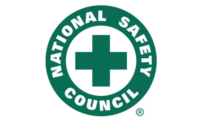Workplace violence is on the rise, yet nearly half of U.S. employers report they are unprepared to prevent and respond to incidents on the job. Recognizing this critical gap in safety preparedness, the National Safety Council, America’s leading nonprofit safety advocate, released a report and playbook through its Work to Zero initiative: Workplace Violence: Using Technology to Reduce Risk. This new resource aims to equip organizations with the information and solutions they need to more effectively mitigate and address workplace violence.
“Research shows that overt acts of workplace violence rarely occur out of the blue, but too often the catalyst for implementing effective means of prevention comes in the wake of tragedy,” said Paul Vincent, NSC executive vice president of workplace practice. “This report provides business leaders and safety managers alike with a foundation for understanding the top workplace violence trends and industry-specific risk factors, while offering a playbook to prevent on-the-job assaults and fatalities before they occur.”
In 2020, the Bureau of Labor Statistics found nearly one in six occupational fatalities stemmed from violent incidents. Additional research further illustrates the threat workplace violence poses to workers across all industries and occupations:
- Over the past decade, healthcare has consistently ranked as the industry most impacted by workplace violence, with an average of nearly 13,000 non-fatal violent incidents occurring annually.
- Behind transportation incidents, violence is the most common cause of death for women in the workplace.
- Frontline retail and transportation workers face the highest risk of criminal-perpetrated violence. Flight attendants, teachers and law enforcement officers are most susceptible to acts of violence committed by culprits.
In addition to calling for more legislative action to address this national issue, the report examined key steps employers can take to reduce workplace violence risk, including:
- Designating a workplace violence prevention task force. In addition to bringing a multi-disciplinary understanding of risk assessment, this group is likely to have an existing rapport with employees, making them ideally equipped to perform trainings on sensitive safety topics.
- Conducting regular table-top exercises or simulations to engage key stakeholders, identify gaps in existing prevention plans and clarify worker responsibilities in emergency situations.
- Utilizing technology to prevent workplace hazards. Notably, the report outlines the benefits and applications of 10 key technologies, such as digital floorplan mapping, virtual reality training, and weapon detection systems.
- Fostering a workplace culture in which psychological safety is prioritized, and where all workers feel empowered to voice concerns and initiate broader safety conversations.
“Employees serve as the eyes and ears of their organization, and their role in preventing workplace violence cannot be overstated. This report not only details how employers can implement the latest safety technology into their workplace but identifies specific steps leaders can take to enhance employee engagement enterprise wide. Together, these safety solutions can make the difference between a high and low risk workplace,” said Emily Whitcomb, director, Work to Zero, NSC.
Funded by the McElhattan Foundation,Work to Zero aims to eliminate workplace fatalities through the use of technology. To learn more aboutWork to Zeroand create a safer workplace, register for the2022 NSC Safety Congress & Expoand visit the Safety Technology Pavilion. You can also visithttps://www.nsc.org/workplace/safety-topics/work-to-zero.



